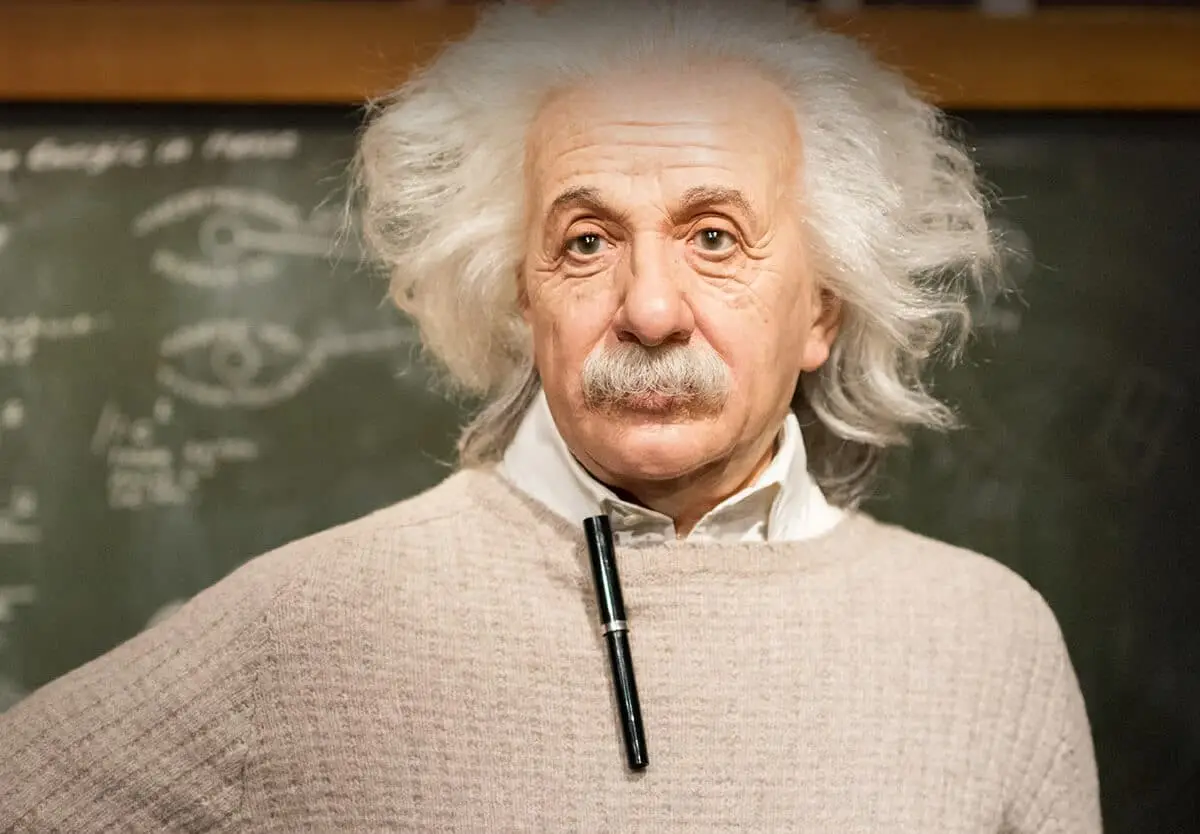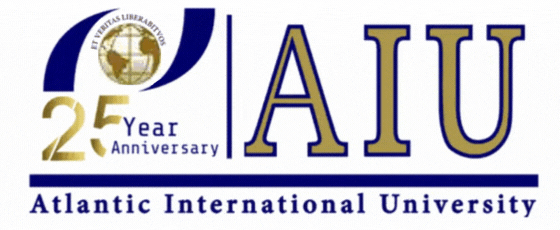- RESEARCHDistance Learning at AIU is enhanced by vast academic resources and innovative technologies build into the Virtual Campus: Hundreds of self-paced courses with video lectures and step by step lessons, thousands of optional assignments, 140,000 e-books, the Social Media & Networking platform allowing collaboration/chat/communications between students, and MYAIU develop students holistically in 11 areas beyond just academics.
- PROGRAMS OFFERED
- Areas of Study
- Courses and Curriculum
- Open Courses
- Register for a Program
- Associate Program
- Associate in Addiction Counseling
- Associate in Agriculture Food And Resources
- Associate in Anti Terrorism Security
- Associate in Behavior Analysis In Special Education
- Associate in Bioethics
- Associate in Climatology
- Associate in Cultural Theological Communication
- Associate in Culinary Arts
- Associate in Ecotechnology
- View all Associates Programs
- Bachelor Program
- Bachelors in Community Development
- Bachelors in Environmental Science
- Bachelor in Education (B.Ed, BS)
- Bachelors in Economics
- Bachelors in Entrepreneurship
- Bachelors in Financial Administration
- Bachelors in Human Resource Management
- Bachelors in Linguistics
- Bachelors in Nutritional Science
- Bachelors in Occupational Health and Safety
- Bachelors in Psychology
- View all Bachelor Programs
- Doctorate Program
- Doctor | of Biology (PhD)
- Doctorate in Business Administration (DBA, PhD)
- Doctor of Economics (PhD)
- Doctor of Electrical Engineering (D.Sc, PhD)
- Doctor of Finance (PhD)
- Doctorate in International Relations
- Doctorate in Information Technology (D.Sc)
- Doctor of Legal Studies (PhD)
- Doctor of Project Management (PhD)
- Doctor of Sociology (PhD, D.Sc)
- Doctorate in Sustainable Natural Resources Management
- View all Doctorate Programs
- Master Program
- Postdoctoral Program
- Postdoctoral in Animal Science
- Postdoctoral in Anti Terrorism Security
- Postdoctoral in Behavior Analysis In Special Education
- Postdoctoral in Bioethics
- Postdoctoral in Blockchain Technology and Digital Currency
- Postdoctoral in Business Management
- Postdoctoral in Cloud Computing
- Postdoctoral in Computer Engineering
- View all Postdoctoral Programs
AIU offers a wide range of majors in areas including the Arts, Business, Science, Technology, Social, and Human studies. More than 120 degrees and programs are available for adult learners at the associate’s, bachelor’s, master’s, doctoral and postdoctoral level. - VIRTUAL CAMPUS
Distance Learning at AIU is enhanced by vast academic resources and innovative technologies build into the Virtual Campus: Hundreds of self-paced courses with video lectures and step by step lessons, thousands of optional assignments, 140,000 e-books, the Social Media & Networking platform allowing collaboration/chat/communications between students, and MYAIU develop students holistically in 11 areas beyond just academics.
- ALUMNI
The world is YOUR campus!”, that is the message of AIU’s month magazine Campus Mundi. Hear the voices and see the faces that make up AIU. Campus Mundi brings the world of AIU to you every months with inspirational stories, news and achievements by AIU members from around the world (students and staff are located in over 200 countries).
Defusing Doomsday: Can Nuclear Explosions Prevent Asteroid Collisions?

Could a nuclear explosion in space save Earth from a catastrophic asteroid impact?
How might NASA’s latest experiments help deflect hazardous space rocks?
What cutting-edge techniques are scientists exploring to protect us from asteroid collisions?
Use your research skills and write about how would the material composition and structural integrity of different types of asteroids affect the effectiveness of a nuclear explosion in altering their trajectories? Use credible sources such as academic journals, educational websites, and expert interviews to gather information and present a well-rounded answer.
(Login to your student section to access the AIU Additional Resources Library.)
Defusing Doomsday: Can Nuclear Explosions Prevent Asteroid Collisions?
The idea of an asteroid hurtling toward Earth conjures images of global devastation, akin to scenes from science fiction movies. However, while Hollywood might sensationalize such events, the threat posed by near-Earth objects (NEOs) is real. Asteroids—ranging from a few meters to several kilometers in diameter—could wreak unimaginable havoc if they were to strike our planet. The good news is that researchers are exploring various methods to avert such disasters, and one of the most promising strategies involves the precise detonation of a nuclear bomb in space.

Source: State Farm/Wikimedia Commons
Deflecting Asteroids with Nuclear Explosions
A recent experiment by an international team of scientists has shown that a well-calibrated nuclear explosion could serve as a powerful shield against incoming asteroids. According to their findings, the X-rays produced by a nuclear blast could push asteroids measuring between 3 to 5 kilometers (2 to 3 miles) wide off their course, preventing a potentially catastrophic impact with Earth.
The key here isn’t to blow the asteroid to smithereens, which could create a dangerous scatter of fragments, but rather to apply just enough force to nudge it into a safer trajectory. By detonating a nuclear device at a precise distance from the asteroid’s surface, the intense radiation from the explosion would vaporize part of the asteroid’s material, generating a “rocket” effect. This vapor would create enough thrust to gradually alter the asteroid’s path, potentially saving Earth from disaster.
While there’s no immediate threat of a doomsday asteroid hurtling toward us, the consequences of being caught unprepared could be dire. That’s why it’s vital to have a reliable plan in place—a plan that includes all options, including nuclear deflection.
A Successful Proof of Concept: NASA’s DART Mission
According to secondary research, NASA recently tested a similar strategy on a smaller scale. In 2022, NASA’s Double Asteroid Redirection Test (DART) mission deliberately crashed a heavy probe into the asteroid Dimorphos, part of a binary asteroid system with Didymos. The target was only 800 meters wide and composed of loosely bound gravel and boulders. Remarkably, the collision succeeded in altering Dimorphos’ orbit, providing real-world evidence that an impact could indeed deflect a hazardous object.

A plume errupting from Dimorphos as the DART mission impacts the asteroid
Source: Astronomy
However, NASA’s experiment also highlighted the limitations of this technique. Dimorphos was relatively small and composed of loose materials that made it easier to shift. Larger, more solid asteroids, the kinds that pose the greatest danger, may not be so easily swayed by a simple collision. This is where the more forceful impact of a nuclear explosion could become a critical tool in planetary defense.
Beyond Nuclear Blasts: Other Deflection Techniques
While the nuclear option may be the most powerful, it’s far from the only method on the table. Scientists are also investigating more sophisticated approaches to deflect asteroids. These include using focused lasers to vaporize a portion of the asteroid’s surface, creating a rocket-like effect as gases escape and propel the object away from Earth. Another concept involves coupling an asteroid with a fusion engine that could push it off course.
One particularly promising idea involves heating a small patch of the asteroid’s surface with a powerful radiation beam. This would cause a portion of the asteroid to evaporate, creating a jet of gas that could gently push the space rock away from a collision course. The basic principles behind this approach—evaporating rock using electromagnetic radiation—can be tested right here on Earth. And, given that different asteroids are made of varying materials, these experiments could help scientists fine-tune their strategies for different scenarios.
Cutting-Edge Laboratory Research
A recent experiment led by physicist Nathan Moore at Sandia National Laboratories brought us one step closer to understanding how nuclear explosions could work in space. Using a device known as the Z Pulsed Power Facility, the researchers produced a massive 1.5 megajoules of X-rays from a tank of argon gas, simulating the effect of a nuclear blast in a controlled setting.
The experiment involved suspending a small grain of fused silica—a material similar to quartz—within a metal foil to simulate a tiny asteroid in freefall. When the X-ray burst hit the grain, micrometers of its surface were vaporized, creating shockwaves. These shockwaves mimicked the momentum transfer that would occur if an asteroid were bombarded with radiation from a nuclear explosion in space.
By analyzing these results, scientists can now model how a much larger asteroid would react to a full-scale nuclear detonation. Their findings suggest that a nuclear explosion could indeed shift asteroids as large as 5 kilometers across, providing hope that we could avert a catastrophic impact with the right technology and preparation.

Asteroid heading towards Earth
Source: SCIEPRO/Getty Images
Preparing for the Worst
Thankfully, no known asteroid currently poses an imminent threat to Earth. Although a few large asteroids are predicted to pass close to our planet in the coming decades, none are on a direct collision course. Still, space is vast and full of surprises. The consequences of a sudden, unexpected asteroid impact would be nothing short of apocalyptic, which is why developing effective planetary defense strategies remains a top priority for space agencies like NASA and international researchers.
If we ever find ourselves facing an existential threat from a rogue asteroid, having multiple options to deflect it—whether through a nuclear detonation, a high-energy laser, or even a fusion engine—could mean the difference between survival and extinction. While no one wants to face such a scenario, it’s comforting to know that, thanks to cutting-edge research, we’re better prepared than ever to protect our planet.
In the end, the future of humanity may depend on our ability to harness some of the most destructive forces in the universe—not to destroy, but to save the world.
If this article triggers any interest in learning how to prevent asteroid collisions, then AIU offers a list of Mini courses, Blogs, News articles and many more on related topics that one can access such as:
Aerospace Engineering and Space Exploration
Atmospheric and Space Sciences
Understanding Lightning Sprites: Mysterious Atmospheric Phenomena
Understanding the Cosmos: Breakthroughs and Expeditions in Space Exploration
AIU also offers a comprehensive array of recorded live classes spanning various subjects. If any topic piques your interest, you can explore related live classes. Furthermore, our expansive online library houses a wealth of knowledge, comprising thousands of e-books, thereby serving as a valuable supplementary resource.
Artificial Intelligence with Drones by Abdullah M
Green Hydrogen by Abdulqader Bin Sahl
Introduction to Agro Ecology by Tobias R
Asteroids: How Love, Fear, and Greed Will Determine Our Future in Space
THE ASTEROID THAT MADE A MOUSE INTO A MAN
Finding Hazardous Asteroids Using Infrared and Visible Wavelength Telescopes
References
X-rays from a nuclear explosion could redirect an asteroid | Space
A Nuclear Explosion Could Protect Earth From an Asteroid Catastrophe : ScienceAlert
Nuclear bombs really could deflect asteroids, lab tests suggest (astronomy.com)
Could a nuclear bomb’s x-rays save Earth from a killer asteroid? (nationalgeographic.com)
Scientists successfully ‘nuke asteroid’ — in a lab mock-up (nature.com)
Good news: A nuke can save us from an asteroid | Science | AAAS
Reminder to our Dear Students,
Please ensure you are logged in as a student on the AIU platform and logged into the AIU Online
Library before accessing course links. This step is crucial for uninterrupted access to your learning
resources.
AIU Success Stories







Contact Us Today!
Begin Your Journey!
AIU’s Summer of Innovation and Growth gives you the ability to earn up to $5000 in tuition credit by completing free lessons and courses.
Whether you’re looking to acquire new skills, advance your career, or simply explore new interests, AIU is your gateway to a world of opportunities. With free access to 3400 lessons and hundreds of courses the ability to earn credits and earn certificates there’s no better time to start learning.
Join us today as a Guest Student and take the first step towards a brighter, more empowered future.
Explore. Learn. Achieve.

Contact Us
Atlantic International University
900 Fort Street Mall 905 Honolulu, HI 96813 [email protected]
Quick Links
Home | Online Courses | Available Courses | Virtual Campus | Career Center | Available Positions | Ask Career Coach | The Job Interview | Resume Writing | Accreditation | Areas of Study | Bachelor Degree Programs | Masters Degree Programs | Doctoral Degree Programs | Course & Curriculum | Human Rights | Online Library | Representations | Student Publication | Sponsors | General Information | Mission & Vision | School of Business and Economics | School of Science and Engineering | School of Social and Human Studies | Media Center | Admission Requirements | Apply Online | Tuition | Faculty & Staff | Distance Learning Overview | Student Testimonials | AIU Blogs | Register for Program | Privacy Policy | FAQ



















